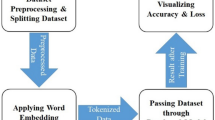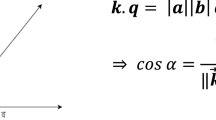Abstract
As social media has become a ubiquitous part of daily life, researchers made a great progress in identifying the emotion in user-generated texts. However, it is a challenging task as people express their emotion in explicit and implicit ways. This paper focuses on the problem of identifying sentiments from implicit sentences which contain no emotional word or phrase. Most of the existing sentiment classification models cannot identify the sentiments accurately since they usually focus on extracting features from grammatical information without taking contextual information into account. In this paper, we argue that the contextual information is the key to identify sentiments in implicit sentences. Moreover, multiple features extracting from different aspects should be taken into account to improve sentiment identification. This paper proposes a multi-feature neural network model considering three aspects: contextual information, syntactic information and semantic information. To better get the semantic information of the sentence, we propose an attention mechanism based on contextual affective space. The experimental results on the SMP2019-ECISA dataset demonstrate that our model outperforms the previous systems and strong neural baselines.








Similar content being viewed by others
Availability of data and material
The datasets used in this study are obtained from SMP2019 (a top academic conference on social media processing in China). The link of the dataset is: http://biendata.com/competition/smpecisa2019/.
References
Chen HY, Chen HH (2016) Implicit polarity and implicit aspect recognition in opinion mining. In: Proceedings of the 54th Annual Meeting of the Association for Computational Linguistics (Volume 2: Short Papers), pp 20–25
Cho K, Van Merriënboer B, Gulcehre C, Bahdanau D, Bougares F, Schwenk H, Bengio Y (2014) Learning phrase representations using rnn encoder-decoder for statistical machine translation
Deng L, Wiebe J (2014) Sentiment propagation via implicature constraints. In: Proceedings of the 14th Conference of the European Chapter of the Association for Computational Linguistics, pp 377–385
Huang M, **e H, Rao Y, Liu Y, Poon LKM, Wang FL (2020) Lexicon-based sentiment convolutional neural networks for online review analysis. IEEE Transactions on Affective Computing pp 1–1, 10.1109/TAFFC.2020.2997769
Liao J, Wang S, Li D (2019) Identification of fact-implied implicit sentiment based on multi-level semantic fused representation. Knowl Based Syst 165:197–207
Li H, Mukherjee A, Si J, Liu B (2015) Extracting verb expressions implying negative opinions. In: Twenty-Ninth AAAI Conference on Artificial Intelligence
Liu B (2012) Sentiment analysis and opinion mining. Synthesis lectures on human language technologies 5(1):1–167
Mou L, Li G, Zhang L, Wang T, ** Z (2016) Convolutional neural networks over tree structures for programming language processing. In: AAAI
Pennington J, Socher R, Manning CD (2014) Glove: Global vectors for word representation. In: Proceedings of the 2014 conference on empirical methods in natural language processing (EMNLP), pp 1532–1543
Van de Kauter M, Breesch D, Hoste V (2015) Fine-grained analysis of explicit and implicit sentiment in financial news articles. Exp Syst Appl 42(11):4999–5010
Vaswani A, Shazeer N, Parmar N, Uszkoreit J, Jones L, Gomez AN, Kaiser Ł, Polosukhin I (2017) Attention is all you need. In: Advances in neural information processing systems, pp 5998–6008
Wei J, Liao J, Yang Z, Wang S, Zhao Q (2020) Bilstm with multi-polarity orthogonal attention for implicit sentiment analysis. Neurocomputing 383:165–173
**ang C, Ren Y, Ji D (2019) Identifying implicit polarity of events by using an attention-based neural network model. IEEE Access 7:133170–133177
Yadav A, Vishwakarma DK (2020) Sentiment analysis using deep learning architectures: a review. Artif Intell Rev 53(6):4335–4385
Zhang L, Liu B (2011) Identifying noun product features that imply opinions. In: Proceedings of the 49th annual meeting of the Association for Computational Linguistics: human language technologies, pp 575–580
Zuo E, Zhao H, Chen B, Chen Q (2020) Context-specific heterogeneous graph convolutional network for implicit sentiment analysis. IEEE Access 8:37967–37975
Funding
This work was partially sponsored by the Natural Science Foundation of Zhejiang (Grants LY20F020007), and the Ningbo Science Technology Plan projects (Grants 2020Z082, 2021S091), and the K.C. Wong Magna Fund in Ningbo University.
Author information
Authors and Affiliations
Contributions
All authors contributed to the study. Yin Zhuang helped in programming and original draft preparation; Zhen Liu was involved in methodology and supervision; Ting-Ting Liu and Chih-Chieh Hung reviewed and edited the manuscript; Yan-Jie Chai collected the data.
Corresponding author
Ethics declarations
Conflict of interest
The authors declare that they have no conflict of interest
Additional information
Publisher's Note
Springer Nature remains neutral with regard to jurisdictional claims in published maps and institutional affiliations.
Rights and permissions
About this article
Cite this article
Zhuang, Y., Liu, Z., Liu, TT. et al. Implicit sentiment analysis based on multi-feature neural network model. Soft Comput 26, 635–644 (2022). https://doi.org/10.1007/s00500-021-06486-7
Accepted:
Published:
Issue Date:
DOI: https://doi.org/10.1007/s00500-021-06486-7




